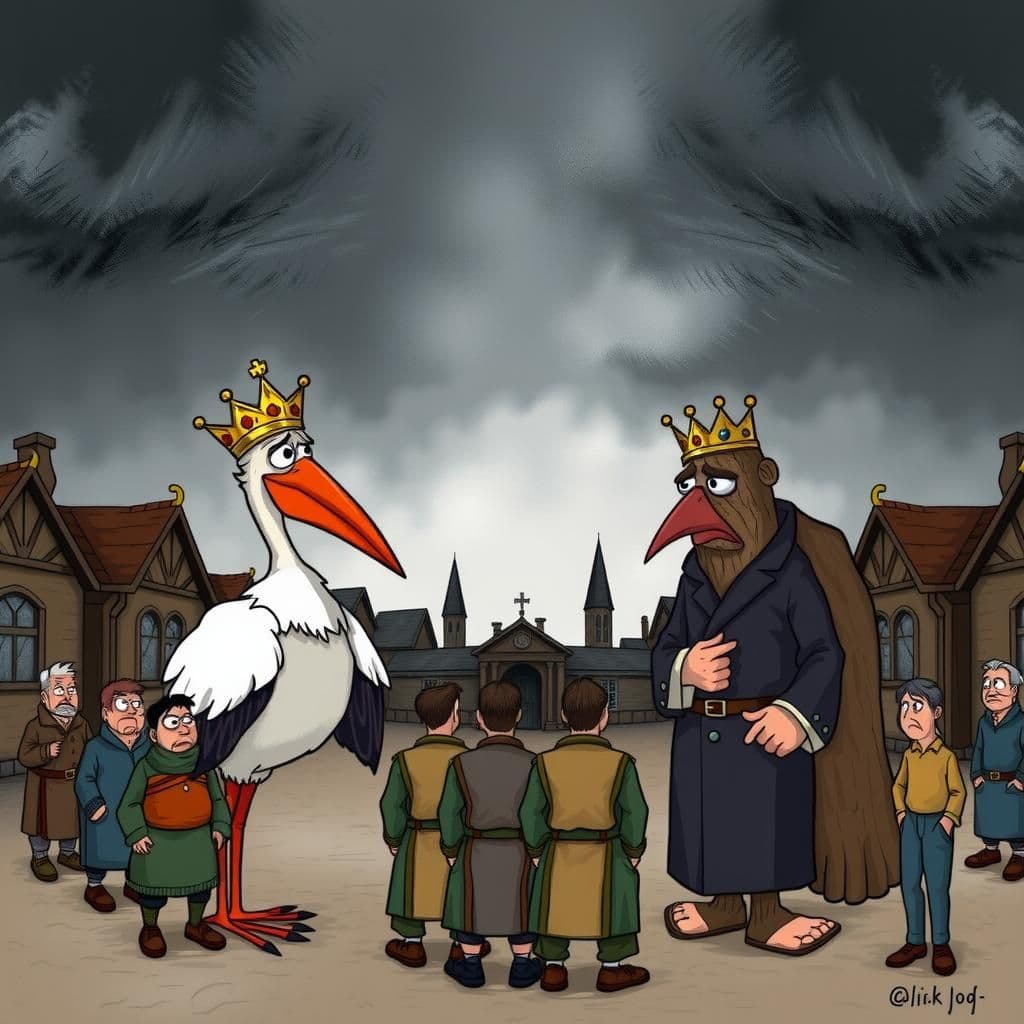The Snake and the Swallow

Story Summary
In "The Snake and the Swallow," an inspirational story with moral lessons, a swallow raises her young in a court of justice, only to face the threat of a snake eager to eat them. The Just Judge intervenes, ordering the snake to take the chicks to his own home, but ultimately consumes them himself. This childhood story with moral highlights the dangers of misplaced trust and the lessons learned from stories about justice and betrayal.
Click to reveal the moral of the story
Justice can sometimes be perverted, leading to greater harm than the initial threat.
Historical Context
This fable, attributed to Aesop, highlights themes of justice and the corruption of authority, often seen in ancient Greek storytelling. The story reflects societal concerns about the misuse of power and the moral ambiguity of those in authority, a common motif in fables that serve both as entertainment and moral lessons. Variations of this tale can be found in later retellings, such as in the works of Jean de La Fontaine, who further explored these themes through animal characters.
Our Editors Opinion
This story illustrates the irony of seeking justice in a flawed system, where those in power may exploit their authority for selfish ends. In modern life, a scenario reflecting this moral could be a whistleblower who exposes corruption within a corporation, only to find themselves punished for their honesty, while the wrongdoers continue to thrive under the guise of legitimacy.
You May Also Like

King Log and King Stork
In "King Log and King Stork," a culturally significant moral story, the people, dissatisfied with a Democratic Legislature that only stole a portion of their wealth, elect a Republican government that exploits them even further. This long story with moral lessons illustrates how the new regime not only takes everything they have but also demands a promissory note secured by their very hope of death, serving as a cautionary tale about the dangers of political change without true accountability. Through this entertaining moral story, the narrative reflects the grim reality that without vigilance, the quest for better governance can lead to even greater exploitation.

The Thistles upon the Grave
In the very short moral story "The Thistles upon the Grave," a Mind Reader wagers that he can be buried alive for six months, using thistles to secure his grave against disturbances. However, after only three months, he emerges to eat the thistles, losing the bet and illustrating the folly of underestimating basic needs. This simple short story serves as a reminder that even the most clever plans can be undone by simple desires, making it a notable example among famous moral stories for class 7.

The Tortoise and the Birds
In "The Tortoise and the Birds," a simple short story with moral undertones, a Tortoise enlists an Eagle to carry him to a new home, promising a reward. However, when a Crow suggests the Tortoise would make a good meal, the Eagle, swayed by the idea, drops him on a rock, leading to his demise. This engaging moral tale serves as a cautionary reminder against trusting enemies for assistance, a common theme in famous moral stories and animal stories with moral lessons.
Other names for this story
"Justice Served: The Swallow's Plight, The Snake's Deceit, The Swallow's Dilemma, A Nest in Danger, The Judge's Verdict, Swallow vs. Snake, The Court of Justice"
Did You Know?
This fable illustrates the theme of justice and the irony of authority, showcasing how those in power may act in self-interest rather than in the protection of the vulnerable, ultimately highlighting the moral complexities within the justice system.
Subscribe to Daily Stories
Get a new moral story in your inbox every day.